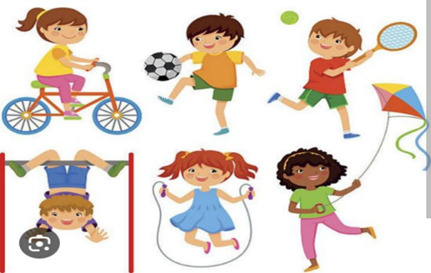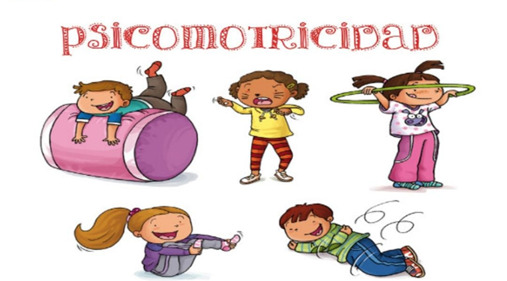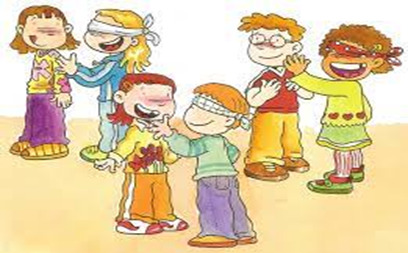#9/11/2020
Text

1 note
·
View note
Text
Love this edit of Yu Liang stalking obsessing over Shi Guang in the live action
Link
#qi hun#hikaru no go#hikaru no go (2020)#liangguang#that second-last clip tho#“has it been 9 years?”#“8 years 6 months 11 days” HAHAHAHAHA
4 notes
·
View notes
Text
Auburn University's avg. GPA from 1993 to 2023

Source: https://auburn.edu/administration/ir/factbook/retention-performance/term-gpa-class-gender.html
#college#grades#graphs#excel#auburn university#trends#averages#infographics#cool graphs#I think the jump up in 2020 is kind of funny#for some reason fall of 2000 was very hard for students#maybe they were anticipating 9/11
2 notes
·
View notes
Text
Wearing my Dean Winchester boots and Fall Out Boy shirt today. 13 year old me would be livid.
#fall out boy#supernatural#I was a big fob fan when I was a like 9/10-11 but then I started to think they were cringe and didn’t listen to them at all when I was 12-15#and I wasn’t a supernatural fan until I was 16 but y’all were infamous on tumblr and I thought it was cringe#oh how things change#2020 changed me
4 notes
·
View notes
Text
one year since BBC Ghosts ending announcement aka my personal 9/11
#guys it was a GRIM day last year for me#cecis top fandom 9/11s: -esc 2020 cancellation -matthias leaving hatari -ghosts ending announcements#there are probs more but these come to mind immediately
3 notes
·
View notes
Text
just saw a tweet that was like "imagine if 9/11 happened 2 mos earlier and 7/11 had the worst PR crisis ever" like that wasn't basically what happened to corona beer in 2020
#granted. pandemic obviously not the same impact as terrorism#& also we stopped calling it coronavirus or varients of that by like 2021 iirc#the switch to covid-19 was like. not smooth by any means but it did happen#but i do recall in 2020 when liquor stores were one of the only operating businesses#everyone being like damn... sucks to be corona rn#havent looked at the data though so idk if their bottom line or pr was impacted that bad#anecdotally i think the people i knew ended up drinking more corona that year. for the bit#alcohol /#also i forget who it was but to whoever rb'd that tweet to my dash#im not vagueing you i didnt rb it because i dont have the energy for an ID rn lmao#good idea generator#also circling back to my first tag. want to re-muddy the waters actually pandemic and 9/11 very similar#with perhaps the most major difference between the two being government willingness to do anything about it#or arguably controversially their willingness to pretend to do something about it in order to use it as a cudgel on the international stage#but we dont have time to get into All That with any sort of nuance#esp not in the tags of a one sentence post about corona's pr problems
12 notes
·
View notes
Text
love 90% of the hl2vrai tag being filled with the discourse about the stream btw thats so cool /sarc
#just shut up and scream about the trailer drop like everyone else ffs#who cares about how many people screamed about the bait and switch#who cares about telling people to ‘cope’#for the people that were angry (though there are few here): this is usually what rtvs does#you are valid to be angry about this because of the long wait but actively hating on rtvs comparing this to 9/11-#-and blaming that anger on ‘autism’? for shame#for the people that are on the opposite side: of course there are gonna be people disappointed-#-but its disrespectful to just tell them to cry about it#everyone just needs to genuinely shut the hell up#we got hl2vrai confirmed. that’s all that matters#you liked bbvrai? then post about bbvrai#but 100 posts bitching about the stream is unacceptable#i bet it was this bad in 2020#[ .txt post ]
5 notes
·
View notes
Text
La Sensomotricidad y la psicomotricidad en la infancia son conceptos clave en el desarrollo de los niños a lo largo de la vida.

Sensomotricidad: se refiere a la interacción entre los sentidos y el movimiento. En la infancia, los niños desarrollan habilidades sensoriales (vista, oído, tacto) y habilidades motoras (movimiento y coordinación) que les permiten explorar su entorno y relacionarse con él. El desarrollo de la Sensomotricidad es esencial para adquirir habilidades cognitivas y sociales.
Las habilidades sensoriales: se refieren a la capacidad del cuerpo para percibir y procesar la información sensorial del entorno. Estas habilidades involucran los cinco sentidos principales: vista, oído, tacto, gusto y olfato. Estas habilidades desempeñan un papel crucial en la percepción y la interacción con el entorno, así como en la toma de decisiones y la comprensión del mundo que nos rodea. El desarrollo y el funcionamiento adecuado de estas habilidades son esenciales para la vida cotidiana y la comunicación.

1. Vista: La habilidad de ver y procesar información visual, como la percepción de colores, formas, distancias y movimientos.
2. Oído: La capacidad de escuchar y procesar sonidos, distinguir tonos, direcciones y reconocer el habla.
3. Tacto: Incluye la capacidad de sentir y procesar texturas, temperaturas, presión y dolor a través de la piel y las terminaciones nerviosas.
4. Gusto: La habilidad de saborear y distinguir diferentes sabores, como dulce, salado, amargo, ácido y umami.
5. Olfato: Implica la percepción y el procesamiento de olores a través del sistema olfativo.
Las habilidades motoras: se refieren a la habilidad de una persona para realizar movimientos físicos de manera precisa y coordinada. Estas implican la interacción armoniosa de los sistemas musculares y nerviosos para llevar a cabo movimientos específicos. El desarrollo de estas es fundamental en el crecimiento y el aprendizaje de los niños. A medida que los niños practican y perfeccionan estas habilidades, adquieren un mayor control sobre su cuerpo y mejoran su capacidad para realizar actividades cotidianas y participar en diversas actividades físicas y deportivas.

1. Coordinación motora fina: Esta habilidad implica movimientos pequeños y precisos, como escribir, dibujar, abrochar botones o recortar con tijeras. Requiere un control fino de los músculos y una coordinación precisa.
2. Coordinación motora gruesa: Se refiere a movimientos más grandes que involucran grupos musculares más grandes, como correr, saltar, nadar o andar en bicicleta. La coordinación motora gruesa es esencial para la movilidad y el equilibrio.
3. Coordinación ojo-mano: Esta capacidad implica la sincronización entre la vista y el movimiento de las manos. Es fundamental en actividades como atrapar una pelota, lanzar un dardo o ensartar cuentas en un hilo.
4. Coordinación bilateral: La habilidad de coordinar movimientos con ambos lados del cuerpo, como tocar un instrumento musical con ambas manos o caminar de manera equilibrada.
5. Coordinación temporal: Implica la capacidad de realizar movimientos en el momento adecuado, como bailar al ritmo de la música o ejecutar movimientos sincronizados en un deporte.
2.Psicomotricidad: es una disciplina que se enfoca en la relación entre el aspecto emocional, cognitivo y motor de un niño. Busca comprender cómo las emociones, la cognición y el movimiento se integran en el desarrollo infantil. La psicomotricidad se utiliza para evaluar y mejorar la coordinación, la percepción y la expresión emocional.

La evolución psicomotriz de niños y niñas se basa principalmente en la maduración neurológica, donde el desarrollo de los órganos sensoriales va de la mano con el motor. Comienza con movimientos básicos y progresa hacia conductas motrices principales, que a su vez facilitan movimientos más complejos en juegos y deportes. La percepción del entorno desde una edad temprana ayuda a construir esquemas mentales y contribuye al desarrollo cognitivo. El crecimiento, la maduración, el ambiente y el desarrollo son aspectos clave en este proceso.
Las capacidades motrices, también conocidas como psicomotrices o psicomotrices básicas, tienen diversas clasificaciones en la literatura especializada. Las diferencias principales radican en los términos utilizados y en su traducción al castellano.
Las capacidades motrices, principalmente influenciadas por la corriente psicomotriz, están estrechamente relacionadas con los procesos cognitivos, especialmente con la percepción. La percepción del medio que rodea al alumno, desde muy pequeño, le ayuda a construir esquemas mentales de su entorno más inmediato, su exploración será posible gracias al desarrollo del movimiento y conllevará la adquisición de capacidades que darán lugar al desarrollo cognitivo (Tamarit, 2016). (43)
Este parte de los movimientos básicos (postura, desplazamiento, manipulación de objetos, etc.) para llegar a las principales conductas motrices (marcha, carrera, saltos, recepción, lanzamiento, etc.), los cuales desencadenan y facilitan los movimientos más complejos propios de los juegos y deportes (Gil, 2003). (38)
Uno de sus componentes es el esquema corporal, que se refiere al conocimiento global e inmediato de nuestro propio cuerpo en relación con el espacio y los objetos que nos rodean, entre estas habilidades motrices básicas está caminar, correr, saltar, escalar, trepar.

Su evolución se basa en leyes fundamentales del desarrollo psicomotor, como la ley cefalocaudal, la ley próximo-distal, la ley de flexores-extensores y la ley de lo general a lo específico. En su evolución se pueden distinguir tres grandes periodos, siendo el primero de 0 a 3 años donde el niño aún no discrimina entre el yo y el mundo.
a) Habilidades Perceptivo-Motrices. Son propias del comienzo de la etapa Infantil y han sido estudiadas, mayoritariamente, por la corriente psicomotriz.
1.- Esquema Corporal. Le Boulch (1986) lo define como “intuición global o conocimiento inmediato de nuestro propio cuerpo,
Su evolución se basa en las leyes “fundamentales” del desarrollo psicomotor. El desarrollo del cerebro consiste en una evolución progresiva del centro a la periferia o tele encefalización (Bueno, Del Valle y De la Vega, 2011)

2.- Lateralidad. Es el predominio de un hemisferio cerebral sobre el otro y es un componente muy significativo del Esquema Corporal. Su proceso evolutivo se divide en cuatro fases, (Sassano, 2015).
• 1ª Fase: Localización (3 años).
• 2ª Fase: Fijación (4-5 años).
• 3ª Fase: Desarrollo (6-8 años)
• 4ª Fase: Maduración y Ambidextrismo (a partir de 8-10 años)

3.- Estructuración Espacial. Es la capacidad de distinguir y ubicar personas y objetos en un espacio tridimensional (Pastor, 1994). Su evolución va paralela a la maduración corporal.

4.- Estructuración Temporal. Durante la etapa primaria, niñas y niños irán pasando de la percepción temporal inmediata a la posibilidad de representar mentalmente estructuras rítmicas de complejidad creciente que constituyen el soporte de los aprendizajes motores con representación mental (Fernández García -coord-, 2002).

5.- Ritmo. El ritmo viene dado por la organización temporal de las secuencias del movimiento.

En resumen, tanto la Sensomotricidad como la psicomotricidad son fundamentales en el crecimiento de los niños, ya que influyen en su capacidad para explorar el mundo, aprender, comunicarse y desarrollarse de manera integral.
#Carbonero Celis#C. (2016). Sensomotricidad y psicomotricidad en la infancia. Sevilla#Spain: Wanceulen Editorial. Recuperado de https://elibro.net/es/ereader/uniminuto/63427?page=11.#Spain: Wanceulen Editorial. Recuperado de https://elibro.net/es/ereader/uniminuto/63427?page=12.#Spain: Wanceulen Editorial. Recuperado de https://elibro.net/es/ereader/uniminuto/63427?page=13.#(Dynamic#2020)#Dynamic#E. [@ElyDynamic]. (2020#septiembre 17). LATERALIDAD juegos IZQUIERDA y DERECHA| actividades motrices| infantes| 2023. Youtube. https://www.youtube.com/watch?v=z6WC#(Inicial#Inicial#M. (2020#septiembre 9). ESQUEMA CORPORAL. Mundo Inicial. https://mundoinicial.com/esquema-corporal/#(Perfil#s/f)#Perfil#V. T. mi. (s/f). Matemáticas que divierten. Blogspot.com. Recuperado el 27 de octubre de 2023#de https://matematicasquedivierten.blogspot.com/p/orientacion-espacial_10.html#(s/f)#(S/f). Pinimg.com. Recuperado el 27 de octubre de 2023#de https://i.pinimg.com/236x/55/88/1a/55881ac3f4a2177fc2375ce3c8d7fc44.jpg#(“EL RITMO EN EDUCACIÓN PRIMARIA”#2018)#EL RITMO EN EDUCACIÓN PRIMARIA. (2018#octubre 21). Blogspot.com. https://actsfisicasexpresivasraquelvalenzuela.blogspot.com/2018/10/el-ritmo-en-educacion-primaria.html#Https//www.pngwing.com
3 notes
·
View notes
Text




remembering my sl 9/11 party
#second life#this was 2020 on someones land that had left build perms on#im pretty sure the towers item came from an unironic 9/11 memorial sim. its incredible
5 notes
·
View notes
Text
On September 11, 2001, 2,977 people died and more than 6,000 were injured in the deadliest terrorist attack in world history
I sincerely believed it was a herald of the end times and lived for years in fear and awe of the idea of the world ending
Idk how to feel about it now
Like, obviously it was a terrible thing to happen, but it wasn't the attack on our religious liberties and freedoms I imagined it to be at the time
Now I feel so bad that there are Muslims who feels this passionate about getting their lives back from what this country has done
I keep thinking about this thread and what I've written here and what I want to add and I feel like I can't express my thoughts adequately
I weep for my lost countrymen
But I also weep for what we've done, how we reacted, how we've changed
#mine#religion#evangelicalism#fundamentalism#9/11 cw#reposting everything from my twitter feed#i'm about to delete everything so get it while it's hot#tweet: 2020#molly's mad life
2 notes
·
View notes
Text
I saw someone saying the next tour will be the 5th 5sos tour. It will be their 20th. 16th headlining tour. Where are you getting your info, dude? It's not even their 5th world tour. What?
#I'm so confused#checking this i actually found out they tour a lot#11 years as a band and 19 tours seems like a LOT#even more considering how they didn't tour 2020/2021#thats like a lot#setlist.fm has almost 700 concerta registered there#if you remove the 2 years they didn't tour#so 692 shows in 9 years give us an average of 76.9 shows a year#i know slfl messes with that average cuz its one tour with 101 shows#and setlist.fm could all the smaller performances#but what the fuck????#they had 5 years out of the past 11 where they played over 100 concerts#oh my god#Oh my god!#im having a crisis dont mind me#i say 19 cuz thats the Wikipedia number kslamalakap#most places say 12 or 15#the number varies#but its a lot of concerts
6 notes
·
View notes
Text
Billy Joel playing Miami 2017 at a benefit concert for 9/11 was such a power move.
#i'm being serious#people went insane after 9/11 radio stations stopped playing a whole list of random songs for a while#just playing it at the benefit was the more normal response#he did it for hurricane sandy too lol#and in 2020??#any time anything bad happens to new york city billy joel shows up to play his song about new york city getting destroyed
6 notes
·
View notes
Text
What a strange time to grow up as a kid in the 90s
Where I thought that it would always be this calm
I took it for granted... of course I knew history but that was in the deep mists of the past.
I thought it was the end of history and we were all home free
Lol
Just a bit of fighting on the edges
Only to be smashed (this illusion) by 9/11
And wars and wars
Terror
And roaring 20s... pandemics again and now "wwiii"(echoes of Cold War never forgotten by some and echoes of the 2nd World War but Really its own thing, with seeds in the so called deep past which is now closer than ever)
The halcyon peace was only a brief reprieve.
And they weren't as calm as we thought-- the roots there, and out of America there was suffering
But a kid I was oblivious and I guess I'm happy I grew up then
But I now know peace is never forever ... and often an illusion
As a child I didn't know how privileged I was (yet. I was just a child... insulated... no need to feel guilt, survivors guilt only appears now .. for the generations to come and for the others then... and now ... the children that don't grow up or grow up too fast)
#now#time#30s it hits#the 90s#even the 50s had the cold war#90s just faint echoes#clintons antics#a few peacekeeping#a few terror bombs in dif countries#distant#childhood#pre 9/11#as a kid a decade feels so long.#2020s#hm#what's next#for the children!#nightthoughts#probably silly#but. my feelings#oh history#now is history
3 notes
·
View notes
Text
still thinking about an iceberg video i watched yesterday and the topic was 'media predicting the future' and it literally had shit like 'these characters self isolating in this video game predicted the pandemic' and 'this character caring about germs predicted the pandemic' and i. what.
#it was mostly stupid shit like that#alongside the typical 'holy shit everything predicted 9/11!' stuff#my post#its just.... bruh#'this predicted trumps presidency!' hes been saying he wanted to run for it since the 90s#'this predicted 9/11!' there was a previous attack on the towers in the early 90s that just didnt do as much damage#'this predicted nfts!' bud its not new for people to scam others with lazy images#it also SCREAMED 'i was made in 2020!' because it was sooo 2020 hot topics#the pandemic ones were just the funniest to me. 2020 invented pandemics guys!#the 2020 pandemic invented caring about germs!#if you know the video or iceberg im talking about#dont send any hate or harassment cause literally its not that deep#i mostly dont care for these cause it feels like people act like these supernaturally predict the future#rather than being coincidences or someone just making references to current/past goings on
0 notes
Note
they have a point though. you wouldn't need everyone to accommodate you if you just lost weight, but you're too lazy to stick to a healthy diet and exercise. it's that simple. I'd like to see you back up your claims, but you have no proof. you have got to stop lying to yourselves and face the facts
Must I go through this again? Fine. FINE. You guys are working my nerves today. You want to talk about facing the facts? Let's face the fucking facts.
In 2022, the US market cap of the weight loss industry was $75 billion [1, 3]. In 2021, the global market cap of the weight loss industry was estimated at $224.27 billion [2].
In 2020, the market shrunk by about 25%, but rebounded and then some since then [1, 3] By 2030, the global weight loss industry is expected to be valued at $405.4 billion [2]. If diets really worked, this industry would fall overnight.
1. LaRosa, J. March 10, 2022. "U.S. Weight Loss Market Shrinks by 25% in 2020 with Pandemic, but Rebounds in 2021." Market Research Blog.
2. Staff. February 09, 2023. "[Latest] Global Weight Loss and Weight Management Market Size/Share Worth." Facts and Factors Research.
3. LaRosa, J. March 27, 2023. "U.S. Weight Loss Market Partially Recovers from the Pandemic." Market Research Blog.
Over 50 years of research conclusively demonstrates that virtually everyone who intentionally loses weight by manipulating their eating and exercise habits will regain the weight they lost within 3-5 years. And 75% will actually regain more weight than they lost [4].
4. Mann, T., Tomiyama, A.J., Westling, E., Lew, A.M., Samuels, B., Chatman, J. (2007). "Medicare’s Search For Effective Obesity Treatments: Diets Are Not The Answer." The American Psychologist, 62, 220-233. U.S. National Library of Medicine, Apr. 2007.
The annual odds of a fat person attaining a so-called “normal” weight and maintaining that for 5 years is approximately 1 in 1000 [5].
5. Fildes, A., Charlton, J., Rudisill, C., Littlejohns, P., Prevost, A.T., & Gulliford, M.C. (2015). “Probability of an Obese Person Attaining Normal Body Weight: Cohort Study Using Electronic Health Records.” American Journal of Public Health, July 16, 2015: e1–e6.
Doctors became so desperate that they resorted to amputating parts of the digestive tract (bariatric surgery) in the hopes that it might finally result in long-term weight-loss. Except that doesn’t work either. [6] And it turns out it causes death [7], addiction [8], malnutrition [9], and suicide [7].
6. Magro, Daniéla Oliviera, et al. “Long-Term Weight Regain after Gastric Bypass: A 5-Year Prospective Study - Obesity Surgery.” SpringerLink, 8 Apr. 2008.
7. Omalu, Bennet I, et al. “Death Rates and Causes of Death After Bariatric Surgery for Pennsylvania Residents, 1995 to 2004.” Jama Network, 1 Oct. 2007.
8. King, Wendy C., et al. “Prevalence of Alcohol Use Disorders Before and After Bariatric Surgery.” Jama Network, 20 June 2012.
9. Gletsu-Miller, Nana, and Breanne N. Wright. “Mineral Malnutrition Following Bariatric Surgery.” Advances In Nutrition: An International Review Journal, Sept. 2013.
Evidence suggests that repeatedly losing and gaining weight is linked to cardiovascular disease, stroke, diabetes and altered immune function [10].
10. Tomiyama, A Janet, et al. “Long‐term Effects of Dieting: Is Weight Loss Related to Health?” Social and Personality Psychology Compass, 6 July 2017.
Prescribed weight loss is the leading predictor of eating disorders [11].
11. Patton, GC, et al. “Onset of Adolescent Eating Disorders: Population Based Cohort Study over 3 Years.” BMJ (Clinical Research Ed.), 20 Mar. 1999.
The idea that “obesity” is unhealthy and can cause or exacerbate illnesses is a biased misrepresentation of the scientific literature that is informed more by bigotry than credible science [12].
12. Medvedyuk, Stella, et al. “Ideology, Obesity and the Social Determinants of Health: A Critical Analysis of the Obesity and Health Relationship” Taylor & Francis Online, 7 June 2017.
“Obesity” has no proven causative role in the onset of any chronic condition [13, 14] and its appearance may be a protective response to the onset of numerous chronic conditions generated from currently unknown causes [15, 16, 17, 18].
13. Kahn, BB, and JS Flier. “Obesity and Insulin Resistance.” The Journal of Clinical Investigation, Aug. 2000.
14. Cofield, Stacey S, et al. “Use of Causal Language in Observational Studies of Obesity and Nutrition.” Obesity Facts, 3 Dec. 2010.
15. Lavie, Carl J, et al. “Obesity and Cardiovascular Disease: Risk Factor, Paradox, and Impact of Weight Loss.” Journal of the American College of Cardiology, 26 May 2009.
16. Uretsky, Seth, et al. “Obesity Paradox in Patients with Hypertension and Coronary Artery Disease.” The American Journal of Medicine, Oct. 2007.
17. Mullen, John T, et al. “The Obesity Paradox: Body Mass Index and Outcomes in Patients Undergoing Nonbariatric General Surgery.” Annals of Surgery, July 2005. 18. Tseng, Chin-Hsiao. “Obesity Paradox: Differential Effects on Cancer and Noncancer Mortality in Patients with Type 2 Diabetes Mellitus.” Atherosclerosis, Jan. 2013.
Fatness was associated with only 1/3 the associated deaths that previous research estimated and being “overweight” conferred no increased risk at all, and may even be a protective factor against all-causes mortality relative to lower weight categories [19].
19. Flegal, Katherine M. “The Obesity Wars and the Education of a Researcher: A Personal Account.” Progress in Cardiovascular Diseases, 15 June 2021.
Studies have observed that about 30% of so-called “normal weight” people are “unhealthy” whereas about 50% of so-called “overweight” people are “healthy”. Thus, using the BMI as an indicator of health results in the misclassification of some 75 million people in the United States alone [20].
20. Rey-López, JP, et al. “The Prevalence of Metabolically Healthy Obesity: A Systematic Review and Critical Evaluation of the Definitions Used.” Obesity Reviews : An Official Journal of the International Association for the Study of Obesity, 15 Oct. 2014.
While epidemiologists use BMI to calculate national obesity rates (nearly 35% for adults and 18% for kids), the distinctions can be arbitrary. In 1998, the National Institutes of Health lowered the overweight threshold from 27.8 to 25—branding roughly 29 million Americans as fat overnight—to match international guidelines. But critics noted that those guidelines were drafted in part by the International Obesity Task Force, whose two principal funders were companies making weight loss drugs [21].
21. Butler, Kiera. “Why BMI Is a Big Fat Scam.” Mother Jones, 25 Aug. 2014.
Body size is largely determined by genetics [22].
22. Wardle, J. Carnell, C. Haworth, R. Plomin. “Evidence for a strong genetic influence on childhood adiposity despite the force of the obesogenic environment” American Journal of Clinical Nutrition Vol. 87, No. 2, Pages 398-404, February 2008.
Healthy lifestyle habits are associated with a significant decrease in mortality regardless of baseline body mass index [23].
23. Matheson, Eric M, et al. “Healthy Lifestyle Habits and Mortality in Overweight and Obese Individuals.” Journal of the American Board of Family Medicine : JABFM, U.S. National Library of Medicine, 25 Feb. 2012.
Weight stigma itself is deadly. Research shows that weight-based discrimination increases risk of death by 60% [24].
24. Sutin, Angela R., et al. “Weight Discrimination and Risk of Mortality .” Association for Psychological Science, 25 Sept. 2015.
Fat stigma in the medical establishment [25] and society at large arguably [26] kills more fat people than fat does [27, 28, 29].
25. Puhl, Rebecca, and Kelly D. Bronwell. “Bias, Discrimination, and Obesity.” Obesity Research, 6 Sept. 2012.
26. Engber, Daniel. “Glutton Intolerance: What If a War on Obesity Only Makes the Problem Worse?” Slate, 5 Oct. 2009.
27. Teachman, B. A., Gapinski, K. D., Brownell, K. D., Rawlins, M., & Jeyaram, S. (2003). Demonstrations of implicit anti-fat bias: The impact of providing causal information and evoking empathy. Health Psychology, 22(1), 68–78.
28. Chastain, Ragen. “So My Doctor Tried to Kill Me.” Dances With Fat, 15 Dec. 2009. 29. Sutin, Angelina R, Yannick Stephan, and Antonio Terraciano. “Weight Discrimination and Risk of Mortality.” Psychological Science, 26 Nov. 2015.
There's my "proof." Where is yours?
#inbox#fat liberation#fat acceptance#fat activism#anti fatness#anti fat bias#anti diet#resources#facts#weight science#save
8K notes
·
View notes
Text
the best days to have been on the internet:
1) nov 5th 2020
2) the day the queen croaked
3) april 1st 2013 (mishapocalypse)
4) april 1st 2024 (boop)
5) when the evergiven got stuck in suez canal
6) when trump got covid
7) four seasons landscaping
8) jan 6th insurrection
9) skeleton war
10) dashcon
11) bisexual firefighter
12) battle of the joshes
13) dec 21st 2012
2K notes
·
View notes